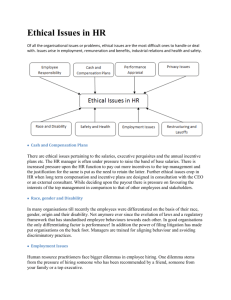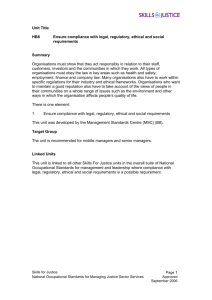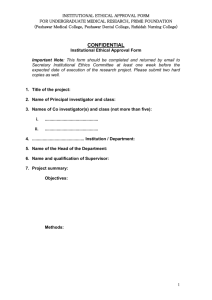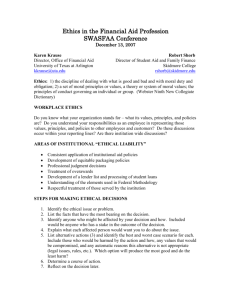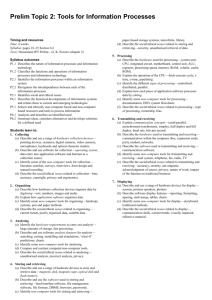Info Skills & Systems: Intro, Processes, Ethics
advertisement
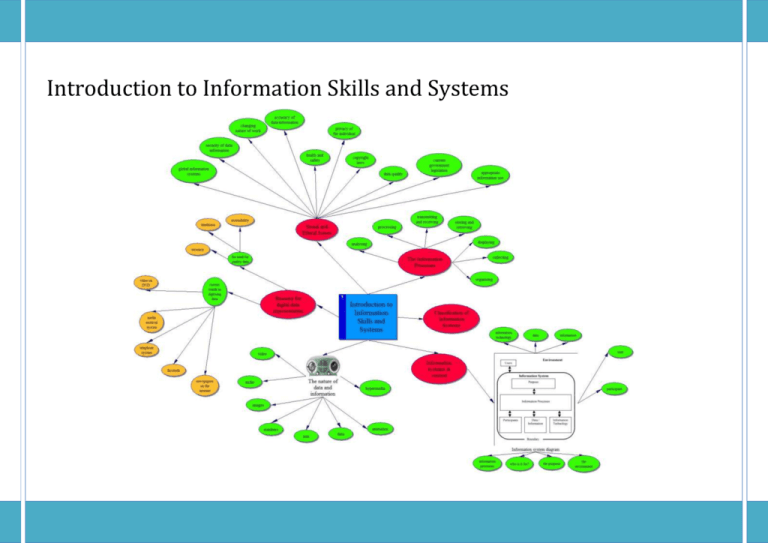
Introduction to Information Skills and Systems Information Processes and Technology Preliminary Course Introduction to Information Skills and Systems Students learn about: Students learn to: information systems in context • diagrammatic representation of an information system in context • diagrammatically represent a given scenario that involves an information system • • explain how an information system impacts on its environment and how it in turn impacts on the information system describe the environment and purpose of an information system for a given context explain how a given need can be supported by an information system describe an information system in terms of its purpose for a given scenario, identify the people who are: – in the environment – users of the information system – participants in the information system • • • • • • • • • the environment – everything that influences and is influenced by the information system the purpose – a statement identifying who the information system is for and what it needs to achieve who the information system is for includes individuals and organisations the information system – a set of information processes requiring participants, data/information and information technology built to satisfy a purpose information processes – computer based and non-computer based activities information technology – hardware and software used in information processes data – the raw material used by information processes information – the output displayed by an information system user – a person who views or uses the information output from an information system participant – a special class of user who carries out the information processes within an information system information processes • collecting – the process by which data is entered into or captured by a computer system, including: – deciding what data is required – how it is sourced – how it is encoded for entry into the system • organising – the process by which data is structured into a form appropriate for the use of other information processes such as the format in which data will be represented • analysing – the process by which data is interpreted, transforming it into information • storing and retrieving – the process by which data and information is saved and accessed later • • • • • • • • distinguish between, and categorise, the activities within an information system in terms of the seven information processes use an existing information system to meet a simple need manually step through a given information system identifying the information process for a given information system, describe how the following relate to the Summary Notes Questions • • Students learn about: • Students learn to: processing – a procedure that manipulates data and information • • • transmitting and receiving – the process that sends and receives data and information within and beyond information systems displaying – the process that controls the format of information presented to the participant or user the nature of data and information • data – the input to an information system • data representation – the different types of media, namely: – images – audio – video – text – numbers • information – the output which has been processed by an information system for human understanding • the generation of information from data via the information processes • how information from one information system can be data for another information system reasons for digital data representation • the need for quality data, including: – accuracy – timeliness – accessibility • current data digitising trends, for example: – newspapers on the Internet – telephone system – video on DVD – facsimile – media retrieval management • • • social and ethical issues social and ethical issues arising from the processing of information, including: – privacy of the individual – security of data and information document1 distinguish between data and information in a given context categorise data as image, audio, video, text and/or numbers identify the data and the information into which it is transformed, for a given scenario • identify examples of information systems that use information from another information system as data • explain why information technology uses digital data describe advantages and disadvantages for the digital representation of data • 1 information processes: – participants – data/information – information technology schematically represent the flow of data and information through a given information system, identifying the information processes Summary Notes Questions Students learn about: Students learn to: – – – – – – • • • • • accuracy of data and information data quality changing nature of work appropriate information use health and safety copyright laws the people affected by social and ethical issues, including: – participants within the information system – users of the information system – those in the environment the ethical and social responsibility of developers current government legislation to protect the individual and organisations the use of information systems in fields such as manufacturing as well as the traditional fields of observation and recording global information systems: – where the purpose involves international organisations, or – where the data and processes are distributed across national boundaries • • • 2 document1 describe social and ethical issues that relate to: – information system users – participants ensure that relevant social and ethical issues are addressed identify and explain reasons for the expansion of information systems, including: – advances in technology – suitability of information technology for repetitive tasks Summary Notes Questions

